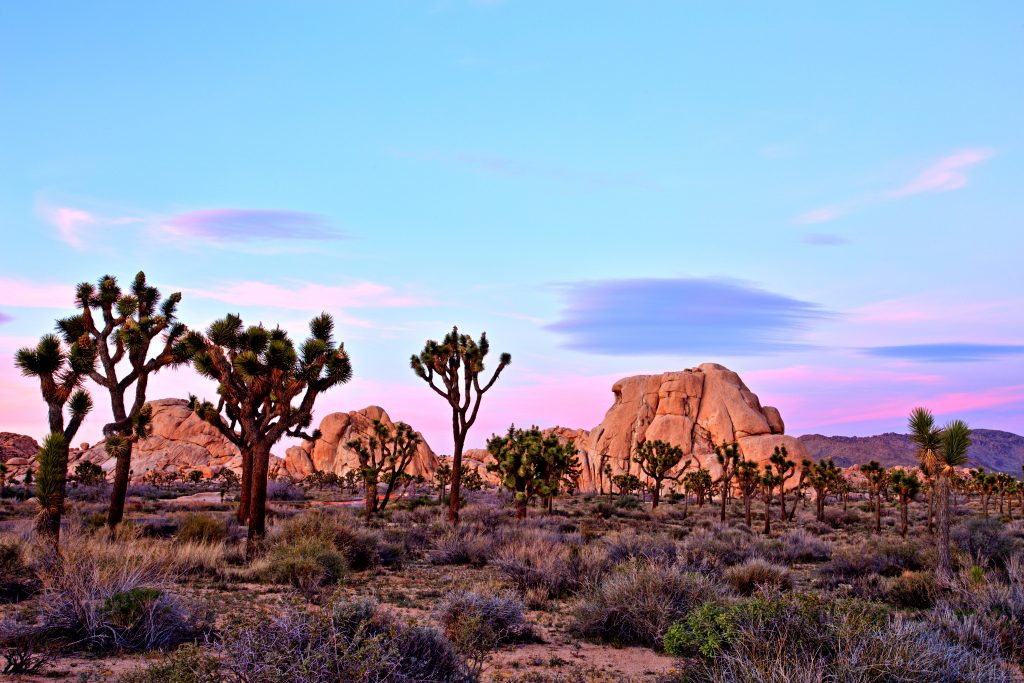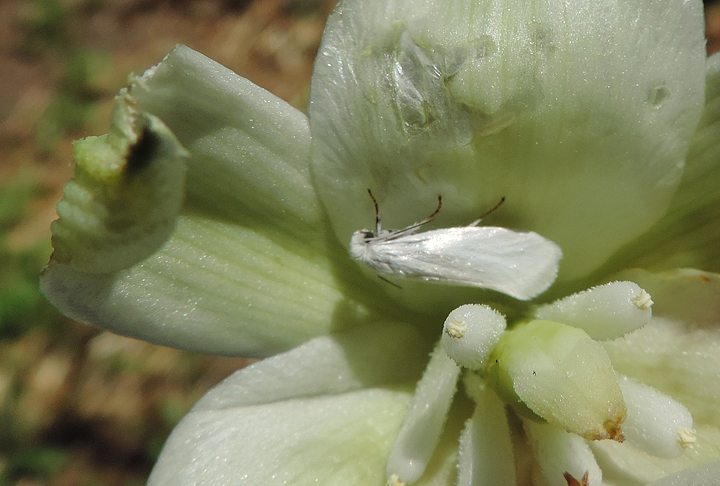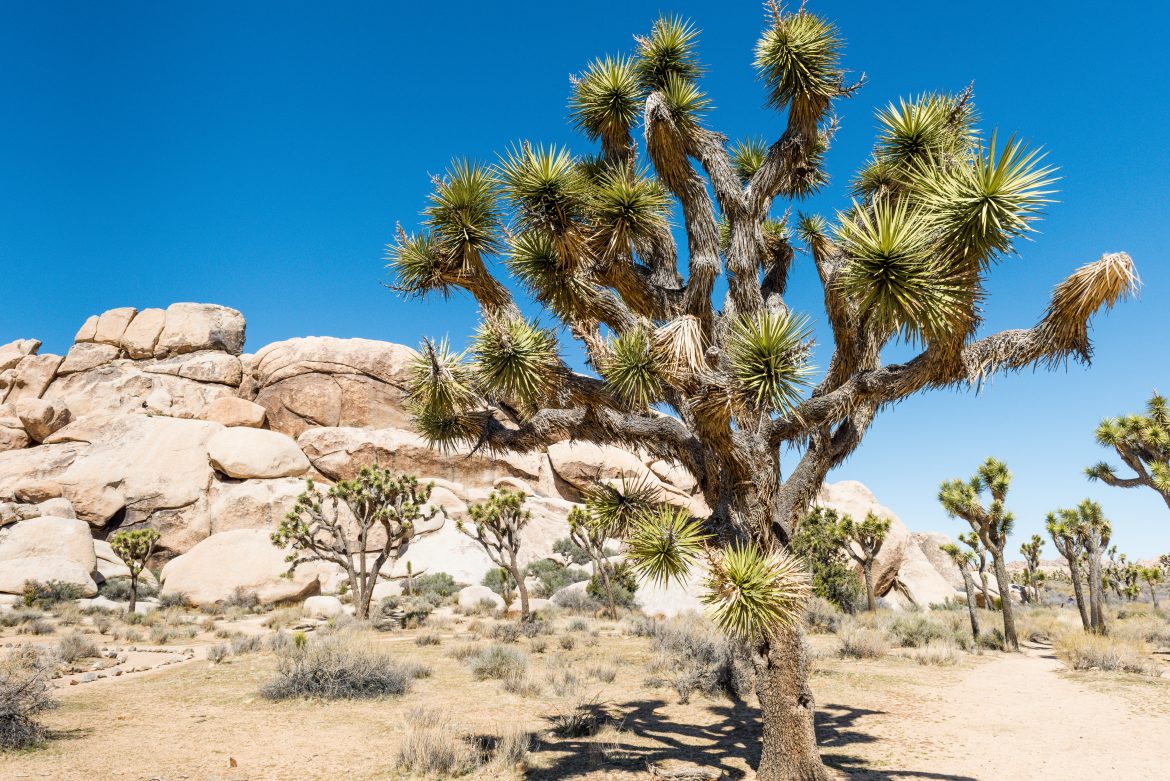We are in an age that some scientists have called “the sixth extinction” because anywhere between 30 percent to 50 percent of species of flora and fauna are expected to go extinct by the middle of this century, according to the Center for Biological Diversity. As explained by the Center, some species ‘naturally’ go extinct every year for different reasons, but this mass extinction event is different. Why? Because it has been centrally caused by humans and the extinction rate is 1000 times larger than the normal background rate. The International Union for the Conservation of Nature has observed a little over 12,000 species of trees and they predict that of those species analyzed, approximately 68 percent of them face the threat of extinction. And the Joshua tree could be one of them.

Named after the biblical figure by Mormon settlers in the mid-nineteenth century, Joshua trees are not actually classified as trees because, due to their water absorption, they are succulents at heart. They are, however, the “trees” of the desert and therefore have been dubbed an “international symbol of the American desert”. They have a single trunk and can grow up to 70 feet tall but normally they have an average height of 40 feet. Their branches host white flowers and spiked leaves and they are found in the dry, elevated deserts of the southwestern United States, like in the Joshua Tree National Park in California. And while a single Joshua tree can live for anywhere between 300-500 years (while the oldest is thought to be 1000 years old), they may not be around for much longer.

The first problem facing Joshua trees is increasing temperatures. As temperatures continue to increase in California, increased “mega-droughts” make the environment less hospitable for this type of tree. This species has survived for millions of years during the worst droughts in history, but recent events like the almost eight-year drought from 2011 to 2019 in California prevented the reproduction of young trees. A study published in the science journal Ecosphere by nine authors in June of this year analyzed the data from 4,000 Joshua trees in the National Park and concluded that if greenhouse gas emissions are seriously halted and global warming is slowed, around 19 percent of this park’s collection of Joshua trees could live beyond 2070, according to LiveScience. However, if no action at all is enacted then 0.02 percent of Joshua trees in the park are expected to last beyond this century.
This astonishing decline is also due to the fact that the Joshua tree is only one-half of a whole and has a mutualistic symbiotic relationship with the Yucca moth. This moth relies on the plant for food and to lay their eggs while the tree requires the moth for pollination. Without one, the other would perish, and Yucca moths are severely struggling to adapt to changing climate conditions. Some trees have tried to reproduce without the help of the moths by making clones, but these clones then cannot reproduce and they are extremely vulnerable to other insects. Because the moths are dying, the Joshua trees – which are already stressed from the lack of water – cannot reproduce properly and the symbol of the Mojave desert that 2.9 million people visited last year is starting to disappear.

“What happens to an ecosystem that loses its main tall tree? All sorts of creatures interact with Joshua trees—insects, kangaroo mice, loggerhead shrikes. They create microhabitats by creating shade in the desert. Young trees germinate nearby. You have a reverberation through the entire ecosystem.”
Juniper Harrower, a researcher who helped author a study on the relationship between Yucca moths and Joshua trees, told National Geographic.
Beyond the threats from climate change, political disruption has caused some problems in the Joshua Tree National Park as well. The 800,000-acre park was left to fall into disrepair during the government shutdown, with the park restrooms left unattended and campsites filling with litter. However, a number of volunteers worked to clean up the park and protect these struggling trees, and the National Park Service announced in January of this year that the park would be repaired and need not close down, as had previously been predicted. This was helped greatly by the non-profit organization Friends of the Joshua Tree, which formed in 1991 to protect this “climbing mecca” and who have now become “the liaison between the climbing community and the National Park Service”.
Lynn Sweet, the leader of the rejuvenation project in the National Park and a plant ecologist explained that the best thing people can do for the environment is to learn about volunteering efforts at their local parks and get to know the keystone species of plants that their communities rely on to thrive – to become “citizen scientists” in their communities. You can get to know these great parks by either visiting them during the day or by planning a camping trip for an overnight stay. Just remember when you’re camping to follow the rules of the park, and leave the land the way you found it.
“Even if someone can’t participate in these venues, taking steps toward learning about your local environment by visiting and volunteering for local parks helps support conservation of species as well. Or, managing your carbon footprint and encouraging others to do the same will help make the difference between nearly no habitat in Joshua Tree at end of century or keeping 20% or more.”
Check out what you can do to help and learn about National Park volunteering opportunities here!
 Food
Food Farmers
Farmers Sustainable Living
Sustainable Living Living Planet
Living Planet News
News